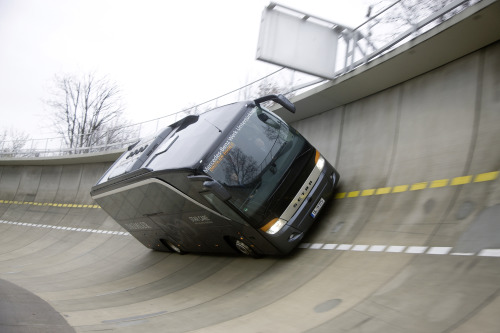Rigid body kinetics
Euler's laws of motion
The laws of motion for rigid bodies were formulated by Leonhard Euler, which extended Newton's equations for point-masses to rigid bodies.
Euler's first law relates the mass \(m\) and acceleration of the center of mass \( \vec{a}_C \) of the body to the total force \( \vec{F} \) on the body (sum of all external forces). It describes the translational motion of the body.
Euler's second law relates the moment of inertia about the center of mass \(I_C\) and the angular acceleration of the body to the total moment \( \vec{M}_C \) (sum of all external moments) about the center of mass. It describes the rotational motion of the body.
Recall that the total force on a particle is related to the linear momentum of the particle. Thus, if we extend that to rigid bodies, we have an alternative way to express Euler's first law:
Similarly, the total moment on a particle about a certain point is related to the angular momentum of the particle about the same base point. We can do the same thing as above, and extend it to rigid bodies, and obtain an alternative form to Euler's second law:
Application alert!
Accelerating and braking uses rigid body kinetics.

Rigid body kinetics can be used to analyze how cars accelerate and brake.
Application alert!
Banked turns uses rigid body kinetics.

Rigid body kinetics can be used to analyze how vehicles move along banks.
Application Alert!
Ship stability uses Center of mass by ensuring the centers of gravity and bouyancy are in proper locations to avoid capsizing when out at sea.

Rotation about arbitrary reference points
In some cases, using the center of mass as a reference point is not ideal, and we might encounter situations in which we would need to consider the dynamics about another point. We will begin by finding the angular momentum of a rigid body about any arbitrary point, and extend that from there.
We can differentiate the above expression with respect to time and obtain the time derivative of the angular momentum of the rigid body about point \(P\). This will yield two important special cases of rotations.
The important special cases are outlined below.
| case | result | consequence |
|---|---|---|
| \(P = C\) | \( \vec{M}_P = \vec{M}_C = \frac{d\vec{L}_C}{dt} \) | This is Euler's 2nd law. |
| \( \vec{a}_P = \vec{0} \) | \( \vec{M}_P = \frac{d\vec{L}_P}{dt} \) | The rigid body is rotating about a fixed point \(P\). This is another form of Euler's 2nd law. |